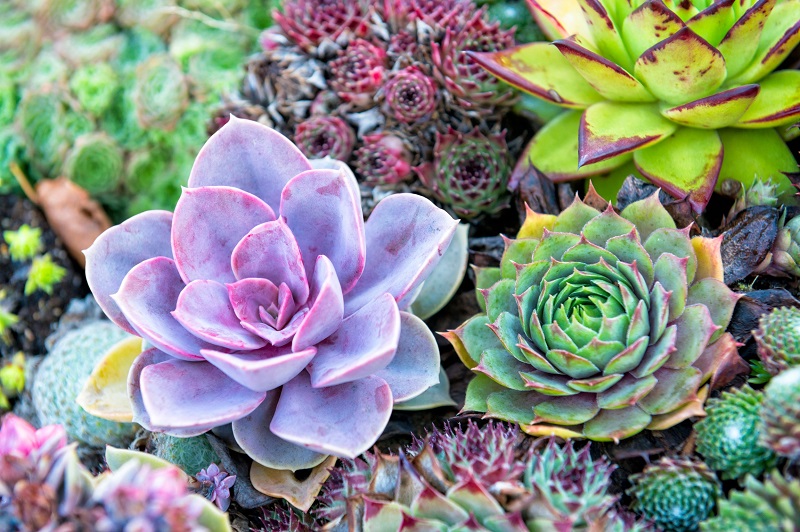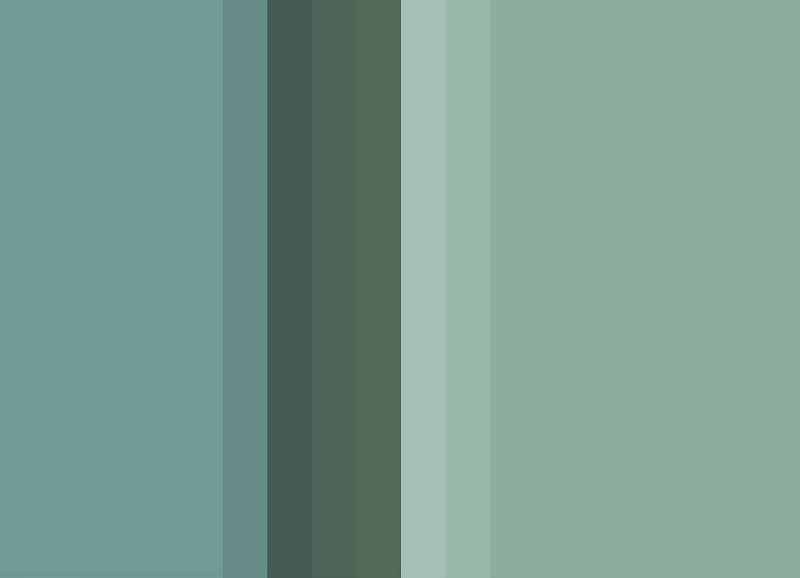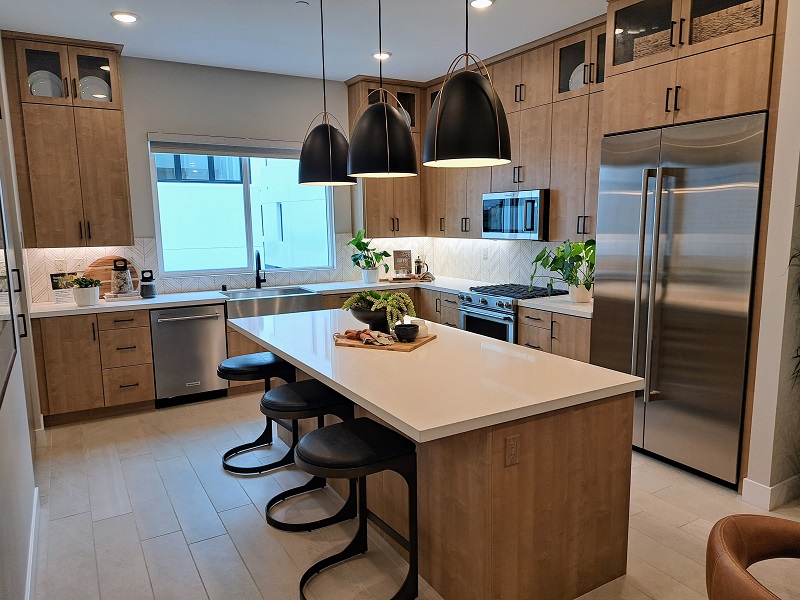Color is one of the most powerful influences on our senses. In relation to interior design, for example, color can affect how we may perceive one room as being luxuriously comforting, while deeming another as being distressingly uncomfortable. In short, hues impact how we feel in a given space, and how much time we wish to spend in it – all decided subconsciously.
Whether you’re refreshing your home to sell or aspiring to create a space that’s uniquely comforting for you and your loved ones, there’s nothing like color design to change your perception of a space or entire home.
In this article we explain the best ways to harness the psychology of color, why it matters, and how it can be used to improve how you feel about and experience your home.
Table of Contents
- What is Color Psychology?
- How is Color Psychology Used for Interior Design?
- Popular Color Choices for Different Rooms of the Home
- Advanced Tips for Applying Color Psychology
- Color Psychology FAQs
- Conclusion
Also see:
What is Color Psychology?
Color psychology is the study of how colors affect human behavior, emotions, and mental processes. Different colors have the power to evoke specific feelings which will impact one’s mood and perception. This area of practice is widely used in various fields, including advertising, marketing, branding, and, of course, interior design.
Here are general rules of thumb to keep in mind when choosing colors for an interior space and their associated emotional responses:
- Warm Colors: Energizing and Stimulating (e.g. red, orange, and yellow)
- Cool Colors: Calming and Relaxing (e.g. blue, green, and purple)
- Neutral Colors: Versatile and Balanced (e.g. white, beige, gray, and soft blacks)

Warm colors in nature: red, orange and yellow leaves during autumn

Cool colors in nature: blues, greens, purples in succulent plants

Neutral colors in nature: white, gray and beige stones on a beach
As we point out later in this article, keep in mind that lighting, textures and size can all further affect how a specific color may be perceived.
How is Color Psychology Used for Interior Design?
Most interior designers intuitively consider color psychology when designing spaces with the goal of fostering specific atmospheres that evoke desired emotions. Here are several important ways in which color psychology is applied in interior design:
- Choosing a Color Scheme or Palette
- Using Color to Create a Focal Point
- Enhancing the Functionality of a Room
- Matching Colors with Distinct Interior Design Styles
- Adjusting Lighting for How Color is Perceived
- Making Small Spaces Feel Larger and More Spacious
Choosing a Color Scheme or Palette
Color palettes are often chosen using a color wheel. With the goal of creating a cohesive and soothing effect, adjacent or analogous colors would be chosen. If a vibrant, dynamic atmosphere is the aim, then complementary colors would be chosen (colors that are opposite of each other on the color wheel).

Using Color to Create a Focal Point
Colors can be used strategically to create a focal point within a given room. By applying a bold, vibrant, or constrasting color to a specific area or element, such as an accent wall or a statement piece of furniture, designers create visual interest by drawing attention to a specific part of a room.

Enhancing the Functionality of a Room
Color psychology can also play a role in enhancing the functionality of a space. For instance, in a home office where focus and concentration are essential, designers might incorporate shades of blue to promote a sense of calm which will boost productivity. In contrast, in a formal dining room, a warm and appetizing color like red could be used to enhance appetite and foster a dynamic atmosphere to stimulate livingly conversation.
Matching Colors with Distinct Interior Design Styles
Colors also play a significant role in defining and accentuating distinct interior design styles.
Here are a few examples:
- Minimalist Design: Neutral colors, particularly whites and grays
- Traditional Design: Rich and warm colors, such as deep reds, golds, and earthy tones
- Modern Design: Neutral colors for the base (whites, grays and blacks), with vibrant hues like red, orange, or electric blue used as accent colors and focal points
- Bohemian Design: An eclectic mix of colors, (e.g. deep reds, terracotta, mustard yellows, and emerald greens), paired with intricate patterns and textures

Adjusting Lighting for How Color is Perceived
Lighting plays a crucial role in how colors are perceived within a space. Natural lighting brings out true colors and enhances their impact, while artificial lighting can affect the overall mood and ambiance. Warm lighting tends to enhance warm colors, while cool lighting complements cool colors. Designers often consider the interplay between natural and artificial lighting to ensure the desired color effects are achieved.
Making Small Spaces Feel Larger and More Spacious
In small spaces, color psychology can be used to create an illusion of openness and enhance the overall feel. Lighter shades like whites, pastels, and cool blues can make a room feel more spacious. Mirrors and reflective surfaces can further enhance a small space when strategically placed to bounce light around the room, which will create an open and airy feel.

Popular Color Choices for Different Rooms of the Home
When it comes to selecting colors for specific rooms, certain hues have been favored due to their effectiveness at fostering specific types of atmospheres.
Here are representative popular color choices for the most commons rooms of a home:
- Living Rooms: Neutral colors like beige or gray for the backdrop, with accent colors such as deep blue, emerald green, or warm earthy tones
- Bedrooms: Soothing and calming colors, such as soft shades of blue, lavender, or pastel hues
- Kitchens: Warm and appetizing colors, such as shades of red, orange, or yellow
- Bathrooms: Clean and fresh colors, such as shades of white, light gray, or pale blue
- Home Offices: Cool and muted tones like shades of blue or green, with pops of yellow or orange to foster creativity
Also see:
Advanced Tips for Applying Color Psychology
Though general rules of color psychology are helpful to understand and follow, there are many scenarios that may require you to reinterpret the rules to best suit your particular project and needs. Here are several examples to keep in mind:
- Consider the Purpose of Your Design Project
- Understand That Not Every Color Has Just One Effect
- Take Extra Consideration for Soothing Rooms
- Know the Limits and Nuances of Popular Colors
- Use Textures to Enhance Color
- Understand the Importance of Tone
- Avoid This Common Mistake
1. Consider the Purpose of Your Design Project
The purpose of your design project will largely dictate with which colors you should consider working. If you’re updating a space for yourself, you’ll have the opportunity to be more creative. However, if you’re redesigning a property to sell, you’ll need to appeal to a broader range of people of whom you may know little about.
An illustrative example of this approach is if you love the color green and want it in every room. If you’re designing for yourself, then feel free to follow your green bliss. If not, however, it would be prudent to go with a more neutral and welcoming Swiss Coffee paint color in rooms where you want to add depth to make them feel larger.
2. Understand That Not Every Color Has Just One Effect
As you get more familiar with the psychology of color and which choices will make the most sense for your space, it’s vital to understand that no color has a straightforward meaning or mood.
Even the color white, which technicality has no hue or shade to it, can have dozens of different meanings. For example, a white room can make a space feel coldly clinical on one end of the aesthetic spectrum, all the way to familiarly welcoming on the other end, depending upon everything else interacting within the room.
It’s vital that you consider other elements of a given room beyond color to make sure that you use everything you can to tell the story you want the space to convey. This is far easier to achieve once you’ve had a little practice.
3. Take Extra Consideration for Soothing Rooms
The best way to convey a soothing room is to:
- Turn down the saturation
- Make the colors paler, and
- Choose cooler tones
Three representative colors that could meet a “soothing” design goal are:
- Muted Sage Green
- Soft Blue
- Slate Gray

Although some warmer colors, when muted, can also be soothing, it’s better if there’s a more relaxed tone to them. This technique replicates the natural blue hue that happens when yellow sunlight casts shadows and naturally relaxes people.

Applying soundproofing paint will further make the space feel more comforting by muting distracting, unsettling sounds, be they interior or exterior.
Also see:
4. Know the Limits and Nuances of Popular Colors
As mentioned early, red is known to boost appetite, hence it being a historically popular choice for formal dining rooms. However, red can also induce feelings of annoyance and hostility, so it’s not the best choice for kitchen wall colors or cabinets. Instead, kitchens should aim for more natural colors like browns and bare wood.

Although kitchens that are all-white, or have gray accents, have been popular over the last couple of decades, these styles are starting to take on negative connotations. Increasingly being perceived as “sterile” or synonymous with “flipped properties”, all-white kitchens can be a mistake if you’re trying to differentiate your home positively in a competitive market.
5. Use Textures to Enhance Color
Don’t forget texture! If you have beautiful wood details in your home, for example, pull out the paint stripper and get to work. Natural wood that has a beautiful grain texture and direction can add visual intrigue beyond just clean walls and smooth floors.
Some designers take this approach further by adding shiplap walls to rooms that need texture without having to add an accent color wall. This technique can elevate the look-and-feel of an interior space without having to take chances on risky color choices.

6. Understand the Importance of Tone
Although it would be convenient to say all oranges are the same and that they conjure the same mood or vibe, it’s never that simple. A neon orange is going to make a completely different impact than that of a muted antique orange, for example.
Instead, study the tone and hue of your perspective color, and consider how it plays against or interacts with everything else in the given space.
A good rule of thumb to follow is to avoid using any vivid and heavily saturated colors on large walls or spaces. A colored accent wall can serve as an interesting feature, but if the wall consists of an intense fuchsia color, for example, it can lead to distractions, or even worse, headaches.
7. Avoid This Common Mistake
One of the biggest mistakes you can make is mimicking or replicating the colors “liked by others” when designing a space for yourself.
If not selling your home, give yourself the freedom to pick colors and hues that make you happy. After all, you’ll have plenty of time to repaint your home in neutral colors when it’s time to sell.
Color Psychology FAQs
Are there any specific colors that promote creativity?
Yes, colors like yellow and orange are known to stimulate creativity and enhance mental agility. Consider incorporating these hues in creative spaces such as studios or home offices.
Can color choices affect productivity in a workspace?
Absolutely! Colors can impact mood and productivity. Consider using calming colors like blue or green for increased focus and concentration in a workspace.
Are there any cultural considerations when using colors in interior design?
Yes, different cultures may associate colors with different meanings. It’s important to consider cultural symbolism and preferences when designing spaces for specific demographics.
Conclusion
Color psychology is a powerful tool in interior design. Whether you’re updating your home for yourself or hitting the market, it’s essential to consider the colors you use.
By understanding the emotional and psychological impact of colors, designers of all capabilities can create spaces that not only look visually appealing but also evoke specific emotions and enhance the overall ambiance. From choosing the right color schemes to creating focal points and considering different design styles, color psychology is a valuable asset in creating harmonious and engaging interiors.
About the Author
Stephanie Rogers is a freelance writer that enjoys sharing her love for writing with others. She primarily writes about home remodeling, interior design ideas, and landscaping, but lately has started writing more about her passion for Music. She lives in her hometown of Phoenix, Arizona where she enjoys spending time with her husband and dog, Chino. Stephanie’s work as a freelance writer can be found on Building Product Advisor, a construction industry resource site.
Recommended Interior Design & Home Décor Articles
- How Window Treatments Can Transform a Room
- Need Renovation Inspiration? Try These Innovative Design Resources!
- How to Refresh Your Décor With Scout & Nimble
- Entertaining at Home is Back: 19 Ideas That Will Elevate Your Game!
- How to Protect Your Indoor Furnishings from UV Rays
- How to Choose Interior Design Services from Virtual to Full-Service
- How Homeowners Can Work Successfully with an Interior Designer
| Purgula is reader-supported. When you click on links to other sites from our website, we may earn affiliate commissions, at no cost to you. If you find our content to be helpful, this is an easy way for you to support our mission. Thanks! Learn more. |







